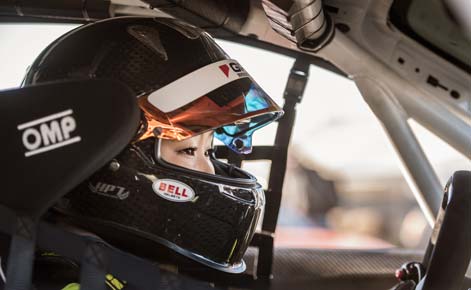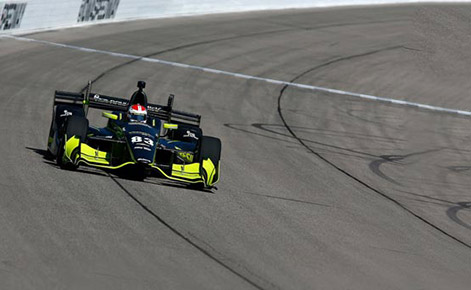When the Indianapolis 500 commences on May 30, it will be the first in the race’s 105-year history to feature a female-forward group of a driver, owner and team. It is a big step in the sport’s commitment to improving equality and inclusion—and research from Michigan State University is helping define that path.
“We have provided evidence to say women can race, and want to—they just need the opportunity to do so,” said Assistant Professor David Ferguson.

Ferguson and his colleagues’ research from MSU’s Department of Kinesiology is identifying and helping to eliminate barriers to entry in the sport.
For example, it was once questioned whether females were even physically capable of driving race cars. The vehicles would need to be redesigned, it was thought, to better suit female athletes and their menstrual cycles. MSU research, led by Ferguson, disproved that: Males and females exhibit no physiological differences in response to motor racing. Instead, Ferguson and fellow scholars argued, female athletes just needed more opportunities to better compete alongside men.
The genders, the 2019 Medicine & Science in Sports & Exercise paper concluded, could physically compete on the same level. So why don’t they?

“Looking at data from the United Kingdom, for every 1.2 boys, there is one girl engaged in football (soccer),” Ferguson said. “Conversely, looking at data of teenage motor sport athletes: For every 14 boys, there is one girl. There needs to be a culture shift.”
Jill Kochanek, Ph.D. ’21 (Kinesiology), addressed this disparity, and provided suggestions for how to change it in research co-authored with Ferguson, MSU Assistant Professor Karl Erickson and MSU student Megan Davis.
Findings showed women racers must navigate overt and subtle forms of sexism, including marginalizing beliefs and behaviors (e.g., being underestimated or having their accomplishments invalidated) along with industry barriers. The research, published in Psychology of Sport and Exercise in 2021, called for researchers (and the industry itself) to recognize women’s unique strengths and needs given inequities in racing, and make research findings on the sport more accessible. Researchers urged sport scientists and decision makers in auto racing to contest gender disparities in the continued effort for inclusion.
“There has been work to increase gender diversity in racing for years,” Ferguson said. “The papers published by MSU scholars have provided scientific evidence on how to dictate policy on improving that effort.”
Both papers—the only two peer-reviewed published articles regarding female athletes in motor sports—also underscore the need for more opportunities to compete alongside their male counterparts.

Like other sports, gender equity isn’t as simple as placing women amongst the roster. That equates, Ferguson explained, to asking someone who can throw a ball to pitch an inning during baseball’s World Series.
Instead, Ferguson and Kochanek’s field-defining research argues that for motor sports to attain true equity, females must be introduced to the sport at an earlier age and have increased opportunities to race. Those steps are beginning to happen on the field—like with the women-led Paretta Autosport and experienced racer Simona de Silvestro participating in the 2021 Indy 500, an event that has been called “The Greatest Spectacle in Racing.”
But opportunities can also happen in the research lab, like at Michigan State University. Ferguson is conducting research to improve the health and well-being of motor athletes by better maintaining hydration and regulating core body temperature. He is also fine-tuning testing, algorithms, simulations and projections with a focus on the future athlete.

“We’re a data-driven group of researchers working to optimize performance of motor sport athletes, regardless of sex,” he said. “Our evidence-based work is providing information on how to develop a better racer. There are thousands of papers each year on how to train athletes in soccer, basketball. There isn’t that work in motor racing. That is what we are contributing to here at Michigan State.”
Related news
Ferguson has been a pioneer in other ways with motor sport research. He has been working with athlete Charlie Kimball—the first athlete with diabetes to lead the Indy 500—since 2011 on improving performance. One of Ferguson’s papers from the collaboration was the first of its kind to evaluate physiological stress on a driver over multiple years. Read: “A Winning Combination” (New Educator, 2017).
Kochanek was recognized as a leading emerging scholar in the nation when she received the Doctoral Scholar Award from the American Kinesiology Association. Plus, she was one of six doctoral students at MSU to receive an Excellence-in-Teaching citation for their dedication to teaching and leadership.




